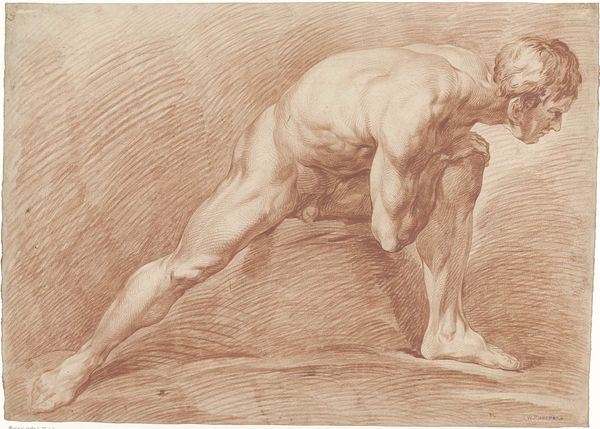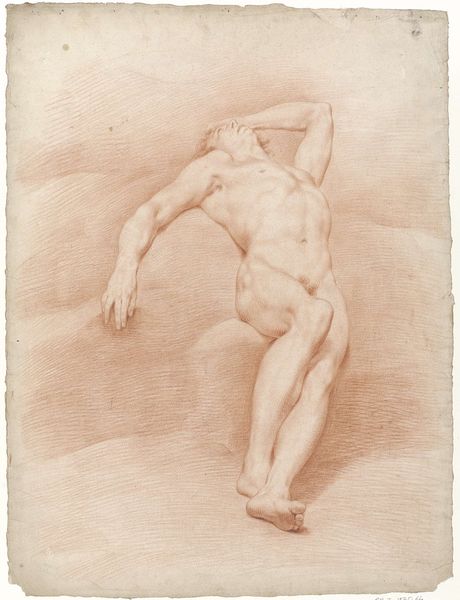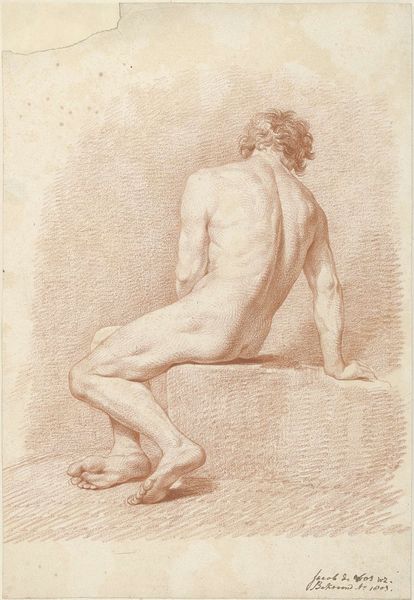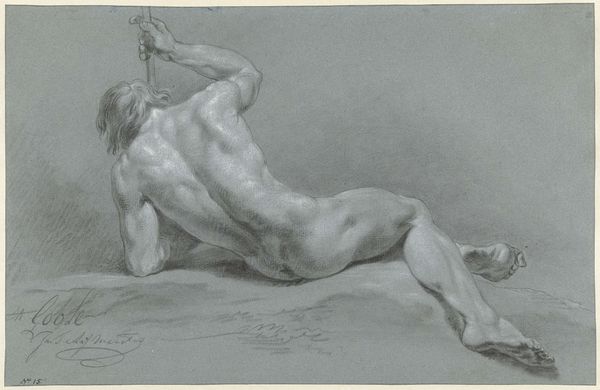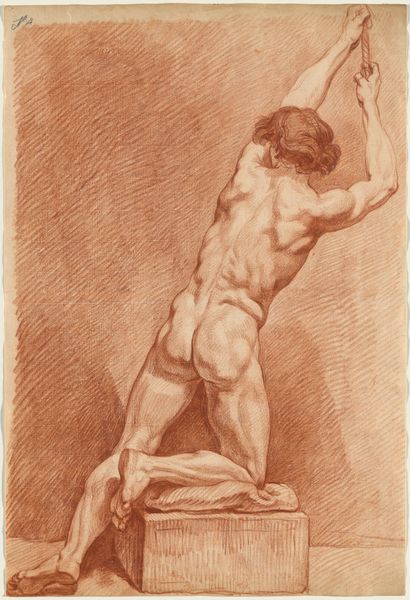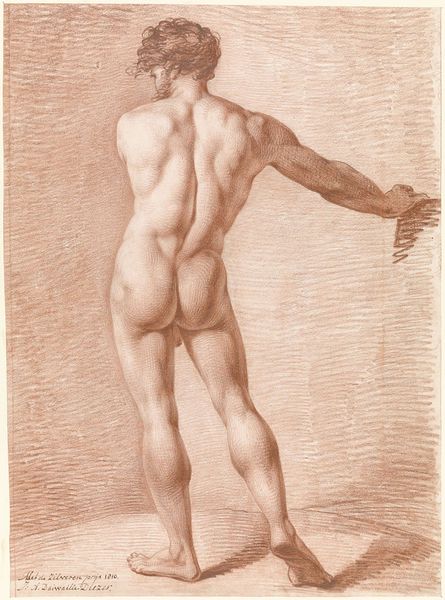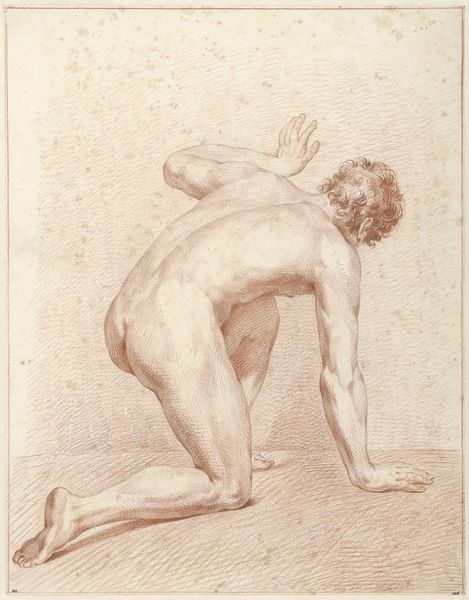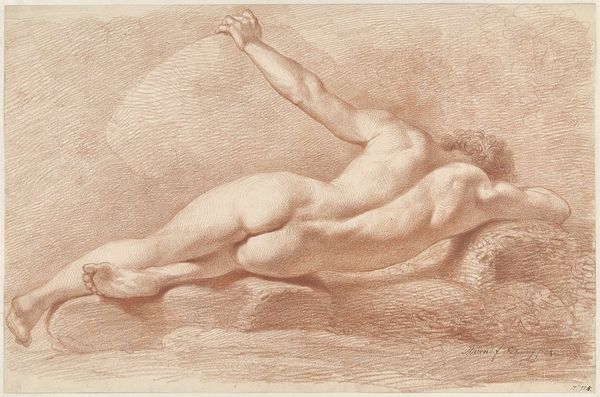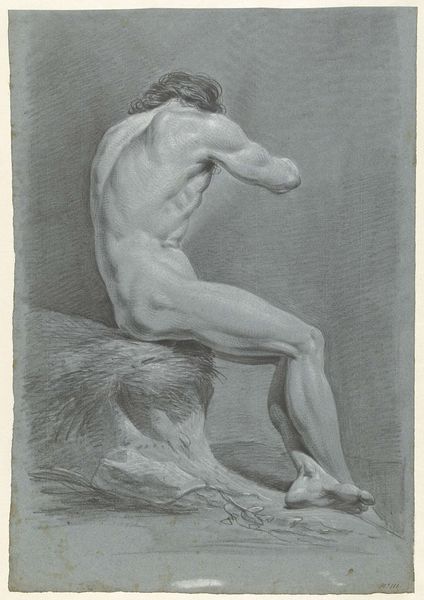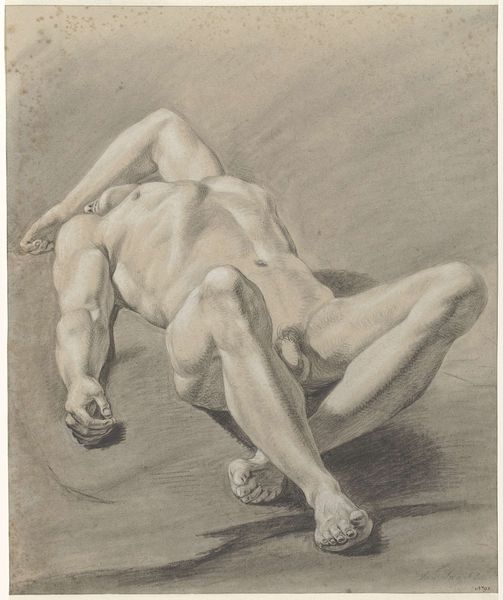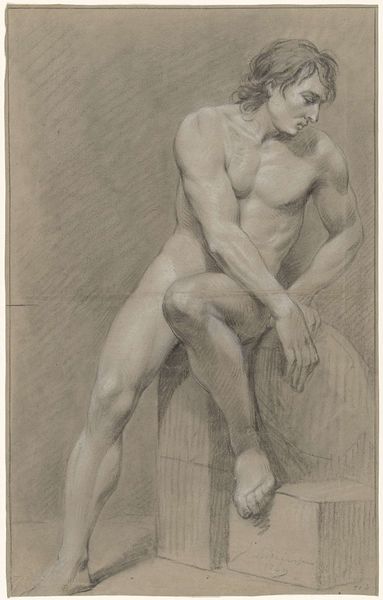
drawing, pencil
#
drawing
#
charcoal drawing
#
figuration
#
charcoal art
#
pencil drawing
#
pencil
#
history-painting
#
academic-art
#
nude
Dimensions: height 343 mm, width 580 mm
Copyright: Rijks Museum: Open Domain
Editor: So, here we have Jan Willem Pieneman's "Op de rug liggend mannelijk naakt," potentially from 1801. It’s a nude male figure drawn with pencil and charcoal. I find the pose so contorted, almost pained. What symbols or stories do you see emerging from this image? Curator: Indeed. The contorted pose immediately brings to mind classical depictions of martyrs or defeated figures. The academic style, with its emphasis on anatomical precision, seems almost at odds with the vulnerability of the subject. What do you make of the red chalk medium? Does it conjure anything for you? Editor: It does give it a somewhat melancholic or maybe even violent atmosphere because it’s in red. How does the historical context inform how we might read this work? Curator: Consider the period – the rise of Neoclassicism, the French Revolution still echoing. This image seems to draw upon those associations. The male nude in art historical settings is typically rendered in an idealized form as representative of virility, prowess and success, but Pieneman's drawing introduces themes of vulnerability. In many Western depictions, physical debasement serves as symbolic indication of defeat, subjugation and emasculation. What is the subject’s gesture conveying? Editor: A surrendering. He seems very powerless in that pose, as his body almost twists backwards in defeat. Curator: Exactly. Think about the shifting values during that time. What does it mean to portray the male form not as a symbol of power, but of fragility? Editor: That makes so much sense! I'd initially seen the figure as suffering, but within the period's revolutionary context it could speak more profoundly to the nature of physical suffering in historical depictions. Curator: Precisely, by stripping the hero of their idealistic stature the artist may be using an academic foundation to introduce a more vulnerable portrayal of power. It leaves us wondering. Editor: I'm glad I can see new meanings! The intersection of artistic technique, symbolism, and historical events offers up such fascinating layers of insight!
Comments
No comments
Be the first to comment and join the conversation on the ultimate creative platform.
